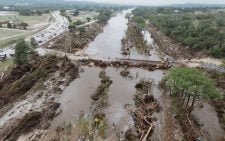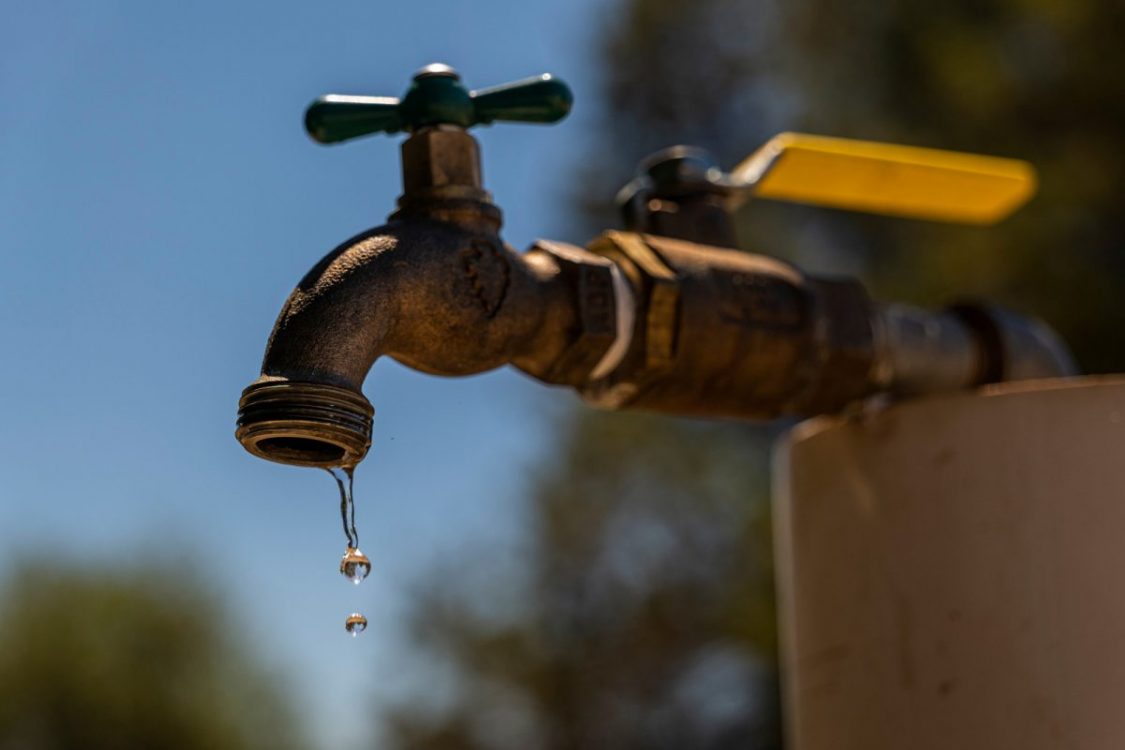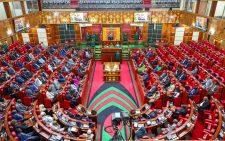3 dead, 1 missing as state faces worse flooding than many have seen in their lifetimes

The body of a 60-year-old woman has been found in flood waters on the NSW mid-north coast, bringing the death toll to three, with authorities still holding grave fears for another person who is still missing.
The region is battling flooding which has “smashed through” communities on the mid-north coast and parts of the Hunter. Premier Chris Minns told reporters on Thursday “we’re seeing levels of rise in local tributaries, creeks [and] rivers that we haven’t seen since 1920”.
“Many people would have never seen this level of inundation or flooding in their communities,” Minns said.
On Thursday evening, NSW police northern regions commander David Waddell announced the third reported death in the floods, which have been brought on by three consecutive days of rain.
He said the woman, who has yet to be formally identified, was located in Brooklana, west of Coffs Harbour. Her family has been informed.
Police earlier said a body, believed to be that of a man in his 30s missing since Wednesday night, was found near Rosewood on Thursday morning. The body of a 63-year-old man was found on Wednesday at a home affected by flood waters on North Moto Road at Moto.
The 60-year old woman travelled with a police officer towards Coffs Harbour at 7pm on Wednesday night until they reached flood waters at Caramba Rd. The officer was in a BMW sedan and could not continue. The woman was in a 4WD and decided to continue after the officer checked the water levels, Wardell said.
The woman called 30 minutes later saying she was in trouble near Brooklana, but could not be located following a search. Her vehicle was found on Thursday.
Waddell pleaded with people not to enter the flood waters.
“It is a really dangerous, once-in-a-lifetime event, and there’s been some tragedy surrounding this death, obviously, the police officer who spoke the woman is very traumatised, and we’re wrapping support services around him.”
A man who failed to come home after walking near a flooded road at Nymboida remains missing.
Although there were thousands of emergency service workers in the field, Minns said “the number of houses that have been inundated and the number of communities that have been isolated, far exceed the amount of boats, the amount of helicopters, amount of trucks that any government can provide”.
There were 2,500 personnel, including 2,200 SES workers, in the field, the NSW emergency services minister, Jihad Dib, said.
The Bureau of Meteorology’s Steve Bernasconi on Thursday afternoon said dangerous flooding would continue, with the mid-north coast experiencing intense rainfall for the third consecutive day.
Heavy rainfall was expected around the southern Hunter, Blue Mountains and Southern Highlands later on Thursday.
“There is a reprieve from the rainfall, though, for the mid-north coast sometime tomorrow as the system does contract south towards the Victorian border on Friday,” Bernasconi said.
“That does not mean that the flood risk for this area is abating at the same rate with possible rises from the rainfall and downstream flooding [are] still being measured and being experienced.”
The SES said on Thursday afternoon there were 149 active warnings, including 37 emergency warnings, and 48,000 people were isolated by flood waters.
The SES said there had been 600 flood rescues and more than 4,600 calls for assistance. Emergency workers were continuing to assist people trapped by floodwaters in Glenthorne, with helicopters, boats, and ground crews deployed.
The disaster has affected essential services such as telecommunications.
The NSW SES assistant commissioner, Dean Storey, said flood rescues teams, including 500 rescue boats and nine helicopters were active between the Hunter and Coffs Harbour, and more assistance was on the way.
Major flooding was occurring on the Manning, Paterson, Hastings, Williams, Nambucca and Macleay rivers.
“Although rainfall may be reprieving in some areas, we haven’t seen the end of renewed river rises in northern NSW and people should not become complacent,” he said.
“More emergency warnings will likely be issued, and if you are asked to leave, please do so. Our volunteers and partner agencies are working around the clock, prioritising rescues and getting help to those who need it most, but we want people to leave if they’re asked to do so.”
There are 15 evacuation centres open, including at Dungog, Gloucester, Taree, Wingham, Kempsey, Coffs Harbour and Port Macquarie.
Lauren Edwards, the deputy mayor of the Port Macquarie-Hastings Council told Guardian Australia several evacuation warnings had been issued for communities in the local government area, including in some low-lying parts of Port Macquarie such as Settlement Point.
She said roads had been cut off and Short Street, one of the main streets in the heart of the coastal city, had been inundated.
“It’s still unfolding here but unfortunately we have started to see the levels [of the Hastings River] come up to major flooding,” Edwards said.
“There’s definitely a lot of evacuation orders now. SES has issued them for a range of locations now, more streets will close, the main northern street into Port Macquarie, the Hastings River Drive is cut off.
“And of course our local government area is on both sides of the Hastings river so clearly we have communities quite affected now.”
Mark Graham, a resident of Coffs Harbour, described persistent rainfall through “many, many hours of the night on Wednesday” on the back of months of saturated conditions. By Thursday afternoon he said several commercial premises and roads in the area had been inundated.












